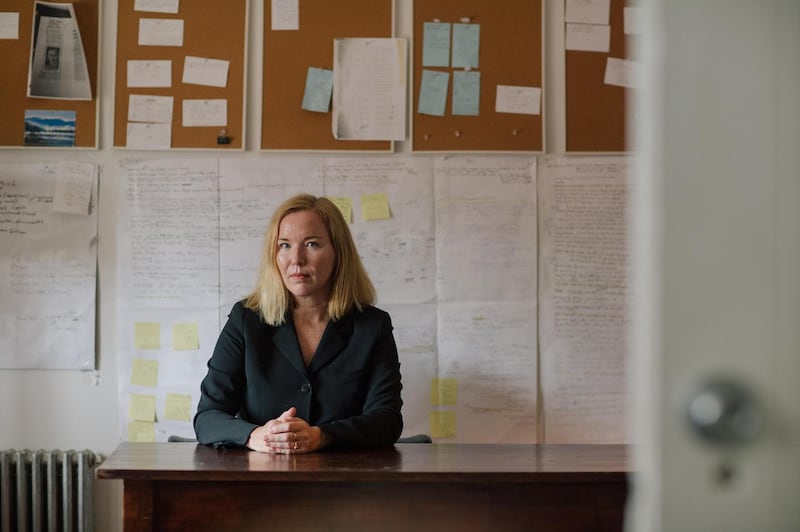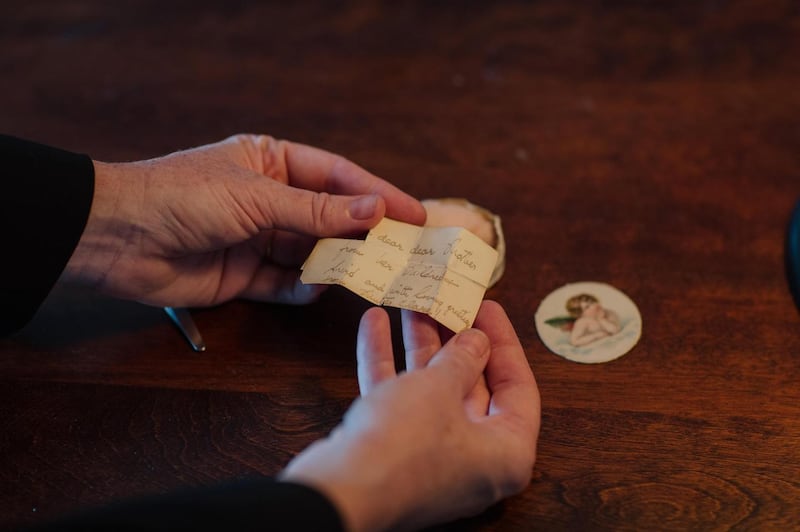Every year when Rebecca Donner visited her great-grandmother's home she and her brother would stand against the kitchen wall to have their heights marked in pencil. When she turned nine she noticed a letter M near one of the faintest lines.
"Who's that?" she asked her great-grandmother Harriette, who muttered, "Oh, that's Mildred." Donner's curiosity was piqued, but it wasn't until she was 16 that she learned the truth: Mildred Harnack was an American spy during the second World War.
Along with her husband, Arvid Harnack, she led a resistance organisation in Berlin, risking her life to leak information from Germany's ministry of economics, where he worked, in the hope of defeating the Nazis. Despite nearly escaping, she was executed by guillotine in 1943 on Adolf Hitler's direct order.
The 11-year-old would use the aquarium glass at Berlin zoo as a mirror to check for tails. On picnics he would wear a stolen Hitler Youth uniform and whistle different songs to let people know if the coast was clear
Although the lore surrounding Harnack is riddled with inaccuracies, Donner sets the record straight in All the Frequent Troubles of Our Days, her new book. “My grandmother Jane said to me, ‘You must write Mildred’s story.’ I very much took that to heart,” says Donner, who lives in Brooklyn. “I thought, Well, yes, but maybe it won’t be my first book,” because she wanted to do the story – and her lineage – justice.
She had a feeling that her grandmother had more to say, but she died in a boating accident a few years later. “I was left with this shimmer of mystery,” Donner says. “It was endlessly fascinating.” Over the years, Donner graduated from the University of California, Berkeley, completed a master of fine arts degree at Columbia, directed a fiction series at KGB Bar in New York’s East Village, and wrote Sunset Terrace, a novel set in Los Angeles, followed by Burnout, a graphic novel about ecoterrorism.
Just before Burnout was published, in 2008, she visited Berlin and went to the German Resistance Memorial Centre, as she knew her grandmother had been in touch with archivists there.
“I thought; ‘Maybe they’ll have a little plaque or something about Mildred’,” Donner says, but when the elevator doors opened she was greeted by a portrait of her great-great-aunt at the entrance to an art exhibition about her life. “There were actually two rooms devoted to her. And this was a huge exhibition,” she says. Still, she didn’t feel ready to tackle a biography.

Instead she spent several years working on a novel based on her grandmother’s untimely death. But in 2016, when Donald Trump’s presidential-election campaign started gaining momentum, “I had this sense that resistance was in the zeitgeist a little bit,” she says. “I thought; ‘This is actually really important for me to write right now’.”
Donner had also learned from her grandmother that Harnack employed the 11-year-old son of a diplomat to deliver coded messages to his parents, who sent the information back to the United States. His name was Donald Heath jnr, he now lived in California, and he was nearly 90.
She contacted him, and in 2016 they met. Heath told her how he would take a different route to Harnack’s apartment every time they met for “tutoring sessions”, how he would use the aquarium glass at Berlin zoo as a mirror to check for tails, and how every time he accompanied Harnack and his parents for picnics in the countryside, he would wear a stolen Hitler Youth uniform and whistle different songs to let them know whether the coast was clear.
To put a woman at the centre of the story and to complicate the conventions through which the story is usually told – all of that felt very right and very overdue
After the interview concluded, Donner remembers, Heath said, “I’ve told you more than I’ve told anybody, but we’re like family.” His eyes welled up. “Now I can die.” Donner replied, “Don’t do that, Don,” but a month or two later he was indeed gone.
After that she sought out a book deal to finance the remaining years of research. She received a six-figure offer from Lee Boudreaux at the American publisher Little, Brown at auction, along with a fellowship from the Leon Levy Centre for Biography. “I had not heard a whisper of this story before, and I thought it was an extraordinary tale,” Boudreaux says.
Donner plunged into archives, either in person or remotely, in the United States, Germany, Britain and Russia. "It's almost as if the world conspires to show you aspects of the story that you hadn't even expected you would discover," she says.
In the weeks after Heath's death she received a call from his family, offering access to 12 steamer trunks full of documents from Berlin, where she discovered his mother's diaries. Louise Heath and Mildred Harnack were good friends, it turns out, and Donner also discovered top-secret intelligence documents offering new insight into the Heaths' and Harnacks' espionage.
Although jetting off to Europe for research might sound glamorous, Donner spent most of her hours poring over documents in her apartment. The wall behind her desk is covered in paper where she mapped out the intersecting anti-Nazi resistance networks, “to figure out what the connections are”, she says.
“Are they meaningful, or are they not? Are these just coincidences, or not?” A shelving unit is filled with white binders containing scans of correspondence; a bulletin board is tacked with photographs of Harnack, Heath and other figures in her research. Three posters decorate her hallway; they were created by high school students at the Mildred Harnack School in Berlin.

Her literary agent, Jim Rutman at Sterling Lord Literistic, was “persistently dazzled” by her ability to complicate existing narratives about the resistance. “World War II feels as gendered a category of books as we have. It is the quintessence of the ‘dad book,’ broadly speaking,” he says.
“To put a woman at the centre of the story and to complicate the conventions through which the story is usually told – all of that felt very right and very overdue.”
Donner has emphasised the importance of historiography, or examining how history is written. In existing accounts, for example, Arvid Harnack is often called a “scholar” while Mildred Harnack is called a “teacher”, which Donner says is incorrect. “She got a job at the University of Berlin, he did not, so, properly speaking, she was the scholar.”
While her family connection provided unparalleled access (the Russian embassy even sent “the tiniest shred” of Harnack’s file), Donner does not believe it made her biased in her rendering of Harnack. “I’m not interested in hagiography,” she says. “The greatest honour I can do her is not to put her up on a pedestal but to show how human she was.”
Over the years she continued asking herself, Why do people commit themselves to acts that look either courageous or suicidal to other people? Harnack knowingly risked death by beheading every day. “My life was nothing like hers, but when you have a family member who has this larger-than-life story of courage and commitment, it is quite inspiring,” Donner says.
Asya Muchnick, the editor at Little, Brown who inherited the book when Boudreaux left the company in 2017, believes there are more stories like Mildred Harnack's to be told. "She is probably not unique in being a woman who was written out of history, and it's going to take one book at a time to bring those stories back to life," Muchnick says.
"It was never a question of whether I would write it; it was just a question of when I would write it," Donner says. "I made that promise." – New York Times
All the Frequent Troubles of Our Days is published by Canongate tomorrow





















